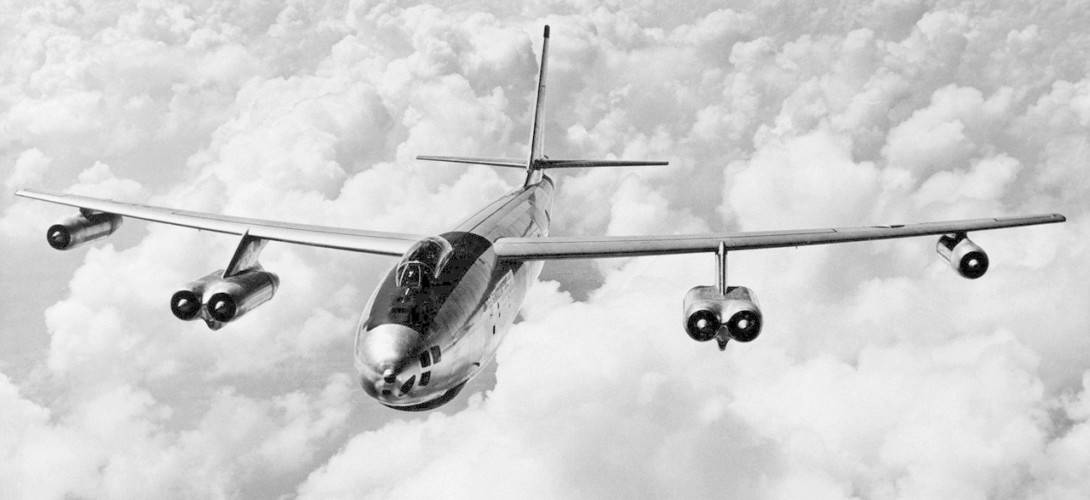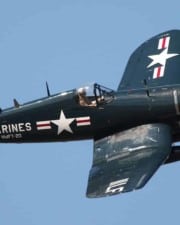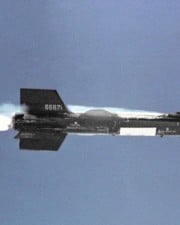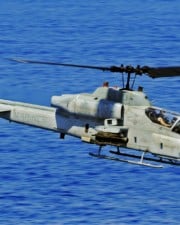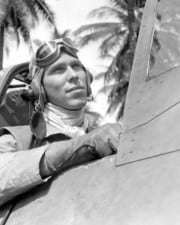Some military aircraft are just iconic. For one reason or another, they stay in the front of our minds, and are what we think of whenever we think of the words “fighter jet” or “military aviation”. But while these aircraft may be iconic, their real service lives don’t match their reputations. In other words, they’re massively overrated.
Writing this article, I know many of our choices will be divisive. Whilst all these aircraft are indeed marvels in their own right – we are not trying to take that away from any of them – their reputation far exceeds what they did in the real world.
For the purposes of this article, only aircraft that entered service have been selected. This means no wonder aircraft that never left the prototype stage or wacky wartime idea. Similarly, these aircraft also had to see combat and be generally recognized for one reason or feat.
10. Fokker DR.1

The aircraft of the famed Red Baron, Manfred von Richthofen, the DR.1 is remembered as arguably the greatest German aircraft of the First World War.
And in many ways, this reputation is well-earned. Its maneuverability was second to none, had a climb rate that was the envy of aircraft designers on both sides of the war and could even turn 180 degrees solely using the immense torque of its engine.
But therein laid the problem. The aircraft had so much torque that many pilots lost control in turns or dives, with it actually ripping itself apart in the process.
On its own, this would be a problem, but the DR.1 was also rather poorly built, at least in the realm of pilot safety. When it crashed, it had a tendency to crumple around the cockpit area, crushing many pilots as they tried to escape, most famously including Werner Voss, Germany’s other main fighter ace of the war.
Plus, despite the DR.1 being the aircraft most associated with the Red Baron, he ironically got most of his kills in other aircraft, namely the Albatross.
9. Sopwith Camel
One of the main opponents of the DR.1, the British-made Sopwith Camel has similarly gained a sort of cult-like following; after all, it was a Sopwith Camel that downed the famous Red Baron.
Much of the Camel mythos comes from this one kill. Downing the Red Baron made the Camel seem like this unstoppable killing machine that was the envy and hatred of German pilots all across the Western Front.
Looking at the numbers, however, reveals something much different. Its kill to death ratio – the key metric by which fighter aircraft are measured by – stands at only 0.24 (0.24 kills per downed Camel).
In other words, five Camels came down to every German aircraft they brought down. Not exactly the killing machine many people think it was.
Most of this was due to the Camel’s poor construction, which made it deadly in the hands of a skilled pilot, but a deathtrap in the hands of an inexperienced pilot. Indeed, of the 851 pilots who died in the Camel, 417 (49%) died due to accidents.
Likewise, it’s often said that German pilots feared the Camel, but in reality, they were far more scared of other aircraft like the Royal Aircraft Factory S.E.5.
8. North American P-51 Mustang

If you’ve ever read or watched anything about WWII, you’ve probably heard of the P-51 Mustang. It’s one of those aircraft that is synonymous with a certain period, and is credited by many historians for being one of the main reasons the Allies were able to gain victory over Axis airmen for control of the skies.
And whilst there are literally hundreds, if not thousands, of reasons why the P-51 has a well-deserved place in history, in many places, the cult of the P-51 has been blown way out of proportion.
Often seen as the aircraft that won in the Pacific Theater, the Mustang’s kill count pales in comparison to the carrier-based Vought Corsair, which was the main fighter used by the Navy against Japan’s fleet of the vicious Mitsubishi A6M Zero fighters.
As a ground attack aircraft, the Mustang’s limited combat range and bomb capacity made it far less effective than the P-47 Thunderbolt, which by most accounts was outdated even before the war.
In a reconnaissance role, the Mustang was plagued by problems which placed it at a huge disadvantage when it came up against enemy aircraft. Likewise, the intelligence gathered from the Mustangs were far less fruitful than those gathered from other reconnaissance aircraft like the P-38 Lightning.
The only place it exceeded over nearly every other aircraft in the US fleet was as an escort for bombers (its original purpose when it was designed before the war), yet this is the one role that the cult of the P-51 glosses over in favor of areas where the Mustang was inferior to most of the other aircraft in that category used by the Allied forces.
7. Mil Mi-24 Hind

For most of the Cold War, the Mi-24 was (and still is) one of the most feared helicopters ever built. Indeed, its dual use nature – as a transport and attack helicopter – gives it a certain edge over nearly all aircraft.
Able to deliver a devastating barrage of fire from the air, before deploying up to 30 troops on the ground to finish the job, the Hind was rightly feared by NATO forces, particularly after it was used to great effect in Somalia, Chad and Libya.
But the Hind, like so many other Soviet-designed aircraft – was limited by its design.
You see, the Mi-24 was designed to be used in open warfare, like those in Somalia, Chad and Libya. But, when used against guerilla fighters, such as in Afghanistan, the Hind met its match.
And that’s partly what makes the aircraft so overrated; on the surface of it, the Mi-24 should be well suited to guerilla combat, as it can attack from both the ground (via the troops they drop) and from the sky via their weapons systems.
Yet, in Afghanistan, and more recently in Ukraine, performing both roles against guerilla fighters has been a disaster for the Hind, leading to literally hundreds of them being brought down, whilst their Cold War-era reputation remains almost completely intact.
6. Boeing B-17 Flying Fortress

After the B-29 and perhaps the Lancaster, there is no more iconic WWII bomber than the B-17. Indeed, it served in every theater of WWII, dropped the most bombs of any bomber during the war, and even returned to base when badly damaged.
And though these are all impressive achievements, the reputation of the B-17 as a fearsome bombing machine that could take any punishment Axis forces inflicted on it was blown out of proportion.
Even by the standards of WWII bombers, the B-17 was woefully under defended, making it easy pickings for German and Japanese fighters and anti-aircraft guns to down a staggering 4,000 of them.
This was in part caused by the fact that by WWII, the B-17 was outdated. Unlike other bombers, the B-17 was developed before the war, meaning that it wasn’t designed with the kinds of missions WWII necessitated in mind.
Aside from being easy pickings, this outdated design also made it horribly inaccurate when compared to other Allied bombers, both in day and night conditions, so even though it dropped more bombs that other aircraft, the damage they often did was considerably less.
5. McDonnell Douglas F-15
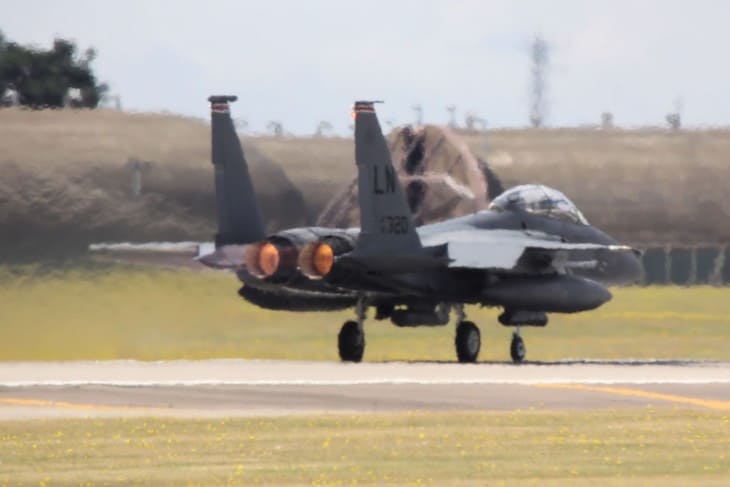
Since its introduction back in 1976, the F-15 has been the fighter of choice for several of the world’s largest air forces, with a kill to death ratio that exceeds any other aircraft currently in service.
But this kill to death ratio is what some might call misleading.
The overwhelming majority of the F-15’s kills have come from conflicts in places like Iraq and Afghanistan. In these theaters, despite being built as fighters first and foremost, the F-15 was deployed in high-altitude bombing missions, where they were out of range of most of the missiles their enemies had.
It was because of this – not their impressive kill to death ratio – that was why the F-15 was feared by the forces it came up against.
4. Junkers Ju-87 Stuka

Rated by Allied soldiers as one of the most fearsome German aircraft of the entire war, the Ju-87 has been featured in nearly every book, movie and video game about WWII.
Indeed, the Stuka gained a much-deserved reputation for destroying Allied tanks, transports and artillery, having previously done the same during the Spanish Civil War.
Yet despite its infamy before, during and after the war, the Stuka’s reputation as a dive bomber that had no equal on the ground or in the air is something of a misnomer.
Yes, the Stuka may have destroyed thousands of tanks, artillery equipment and even a fair few ships, but many of them were poorly defended, eg. they weren’t shooting back.
In essence, the Stuka scored a large portion of its kills against stationary, unarmed combatants.
Furthermore, with the rate of Allied wartime production, the equipment destroyed by the Stuka so quickly was replaced just as fast, thus reducing the overall effectiveness of their attacks.
3 Mikoyan-Gurevich MiG-25
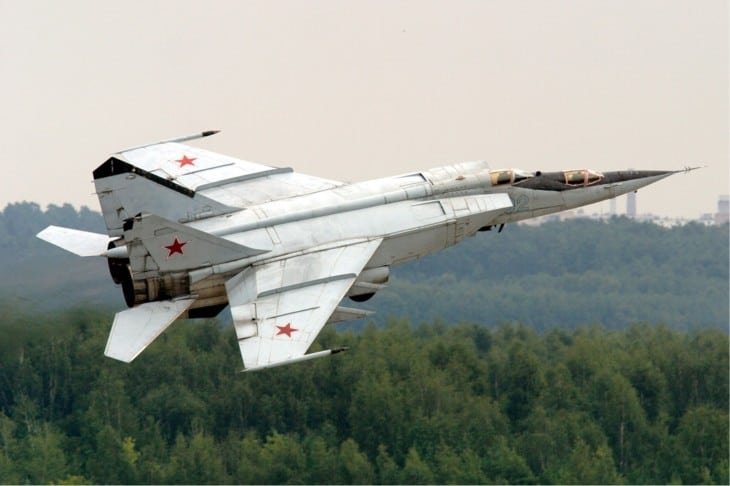
The premier fighter jet of the Eastern Bloc for more than 20 years, the MiG-25 is one of the fastest aircraft ever built. Indeed, it was so fast, it once nearly caught up to a SR-71 Blackbird.
But much of the MiG-25’s reputation came from the secrecy with which it was developed.
When the West saw the first photos of the MiG-25, they lost their collective minds. They feared it would be the aircraft that would win the Cold War for the Soviets, overwhelming Western air defenses with sheer speed and maneuverability.
Even after the West got their hands on a defected MiG-25 and realized many of these fears had been blown out of proportion, the MiG-25 still had this almost God-like aura around it.
In truth, its speed was so poor at high altitudes and its engines were so inefficient that it could only maintain its 3.2 Mach top speed for a few seconds before its engines cut out, and its handling made it rather difficult to do any sort of high-g dogfighting.
Likewise, even by Russian standards, the MiG-25 was unreliable, being one of the few Soviet aircraft to be regularly grounded because of FOD (which many Soviet engines were designed to be impervious to), meaning there were rarely enough MiG-25s to effectively defend the Soviet Union if the Cold War ever turned hot.
2. Boeing B-47 Stratojet

Among the first jet bombers in the USAF’s arsenal, the B-47 Stratojet held the distinction for being one of the highest-flying aircraft ever built when it entered service in June 1951, operating at a ceiling of 40,500 feet (2,300 m) – far above all enemy aircraft and missile systems.
Flying at such a height, the Stratojet gained a reputation for being invulnerable. Indeed, had it ever been deployed in its originally intended purpose: dropping nuclear bombs on key Soviet cities and military targets, it would have wrought a havoc the Soviets wouldn’t have been able to do anything about.
But while a great aircraft, the fact of the matter remains that simply too many Stratojets were built. In hindsight, the USAF probably only needed around 200 B-47s, so they had enough to be stationed at their various bases around the world to be deployed at a moment’s notice. Instead, over 2,000 were built.
Due to this serious overproduction, the USAF was forced to use thousands of these aircraft in reconnaissance roles where, much like their use as conventional bombers, they seriously underperformed.
In their role as a nuclear bomber, they were thankfully never used, and were replaced in service by B-52s when new Soviet jets and missiles could reach them when flying at their huge service ceiling.
Indeed, the most notable achievements of the B-47 came not from its role as a bomber or reconnaissance aircraft, but from those few models that were used as testbeds and experimental aircraft, helping to test new engines and aircraft systems, most notably what’s now known as fly by wire.
1. Sukhoi Su-57

If you’ve watched an action or war movie from the 2010s and 2020s, you probably know the Su-57 as the highly maneuverable, fast, stealth aircraft that is touted as the Russian answer to the F-22 Raptor and the bane of Western pilots everywhere.
And whilst some of the other aircraft on this list have a reputation that are just slightly overblown, the Su-57’s is almost a flat out lie.
Indeed, much of the reputation owed to the Su-57 comes from Western-made Hollywood movies that were made while the Su-57 was still in the development and prototype stages, with much of its lethality added for plot reasons rather than because of fact.
The fact of the matter is, that in a straight up comparison, the Su-57 isn’t more maneuverable, isn’t stealthier and is slower than the F-22.
And no, the Su-57 doesn’t make up for this in terms of weaponry or superior technology.
In the two combat arenas it has been in – Syria and Ukraine – the Su-57 has been relegated to flying in Russian airspace only; reportedly because it can still be shot down by an Su-30 fighter in a one on one dogfight.
Related Posts
